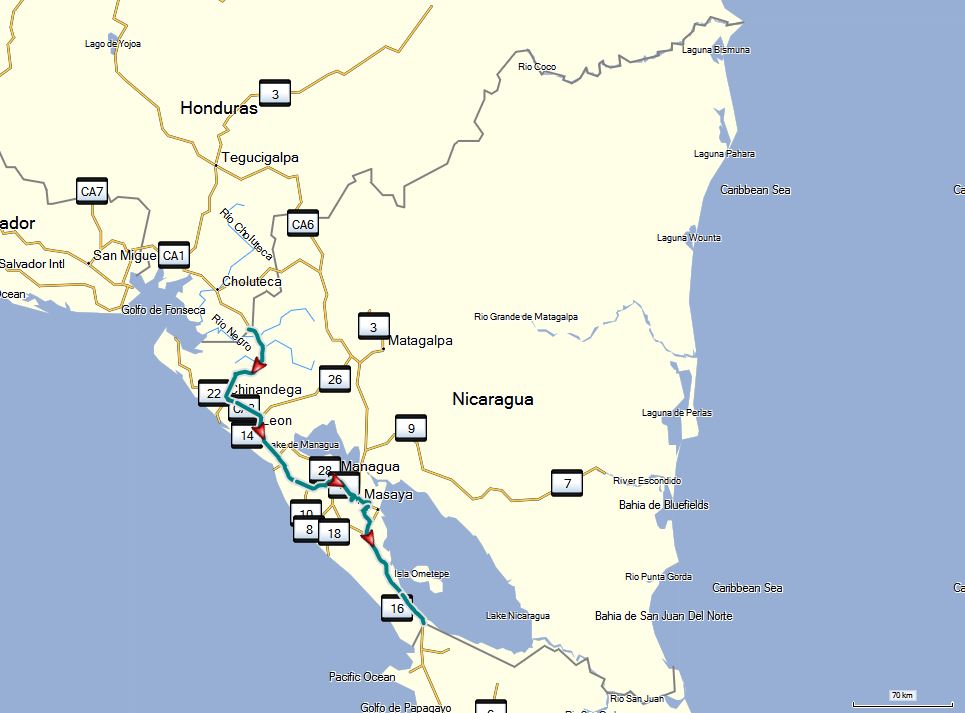Contents
Travel information
We drove 242 miles (390km) through Nicaragua and were there for four days. In the following report, there are a few tips for an individual trip through Nicaragua in your own vehicle.
Visa
The C4 stamp from Guatemala is valid, and your passport is also stamped. US$ 12 per person was charged as “tourist tax“. Upon departure, US$ 3 more per person was charged as “fee for waiting in line“. Although these fees are not permitted under the C4 agreement, trying to resist is useless since the immigration official has the leverage.
Health insurance
For our entire trip, we took out family travel insurance from STA-Travel, which had the best cost-quality ratio compared to other providers. It is especially important to ensure that there are not any high deductibles.
Vehicle
Vehicle importation was surprisingly simple. The customs official even had a copier and prepared the necessary copies himself. Vehicle importation was free of charge. In Nicaragua, insurance is obligatory and can be taken out for US$ 12/month at the border
Driving
The condition of the streets varies from good to catastrophic. We found the words main connecting streets in Central America here. There are a lot of oxcarts and cyclists on the roads, even on large ones. In the cities, the one-way streets often have no signs, so we oriented ourselves on the direction the cars were parked in. There was very little traffic overland, but lots of congestion in the cities.
Eating and drinking
Before driving into Costa Rica, it is worth is to stock up on four and drink. At the beaches, you can be bamboozled when you buy something. If you feel the price is too high, mentioning that you aren’t from the U.S.A. and that you know the general price structure can help. We found fewer roadside vendors than usual. There are no more tacos; instead, you find lots of stews and soups. We got drinking water free of charge at gas stations.
Safety
The usual precautions apply in the cities and on the beaches, and especially pickpockets and cars being broken into can be a problem. Spending the night in a safe place is important; we heard first-hand about an attack while people were camping.
Climate
In January, it was very hot and dry. Since there were hardly ever any clouds in the sky, the sun burned very strongly.
Tips for travel with children
In restaurants, the employees were attentive and offered high-chairs and toys for the children. We had no negative experiences, but the Nicaraguans were very reserved and not as sociable as the people we had become used to in the other countries.
Places to spend the night
Here is a map of all our overnight stays in Central America.
Here is a list of the individual places with GPS coordinates, cost, and commentaries and
here is the accompanying gpx file for downloading.
We didn’t have any big problems finding suitable places to spend the night. As a rule, restaurants, hotels with parking lots, and 24-hour-parking areas in cities are well-suited. Some of the demands for a night on the parking lot were totally excessive; then we just kept asking around since we had no desire to bargain when the starting point was much too high.

Recent Comments